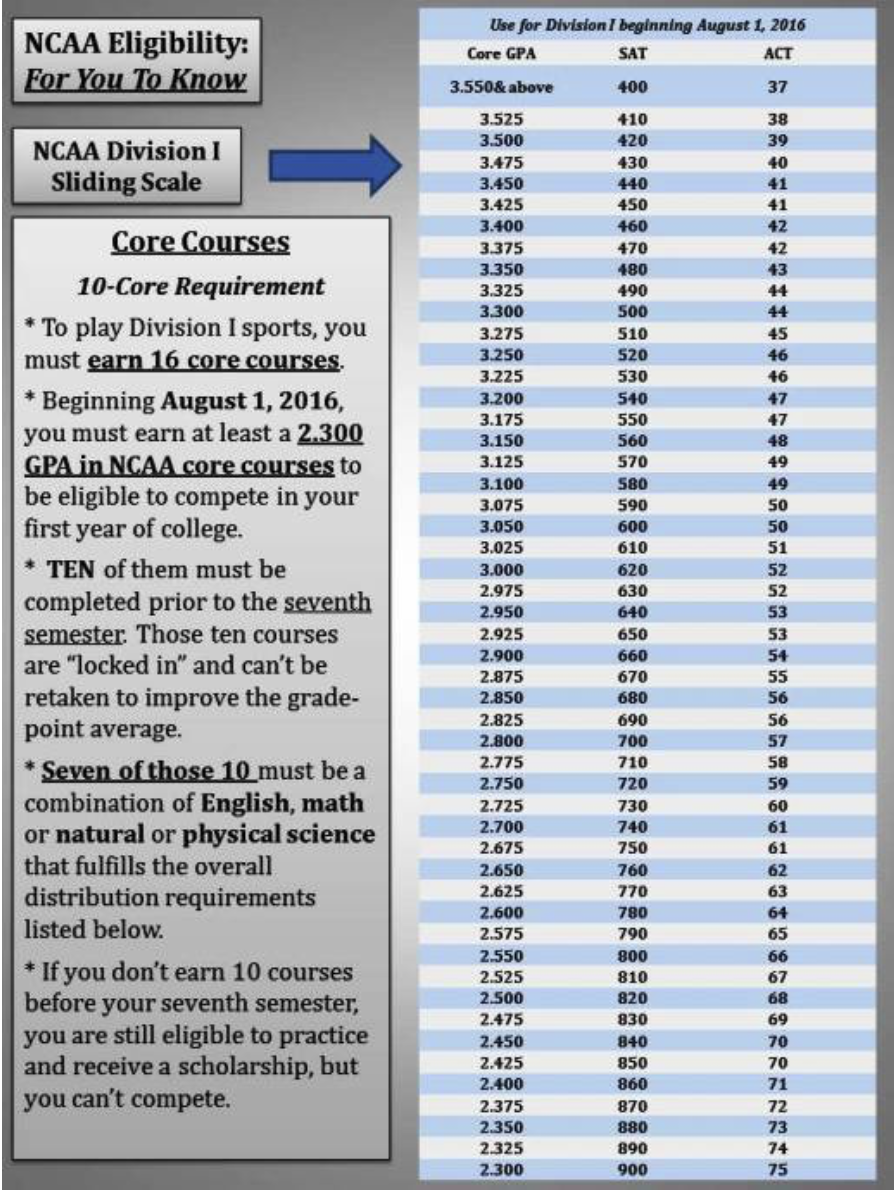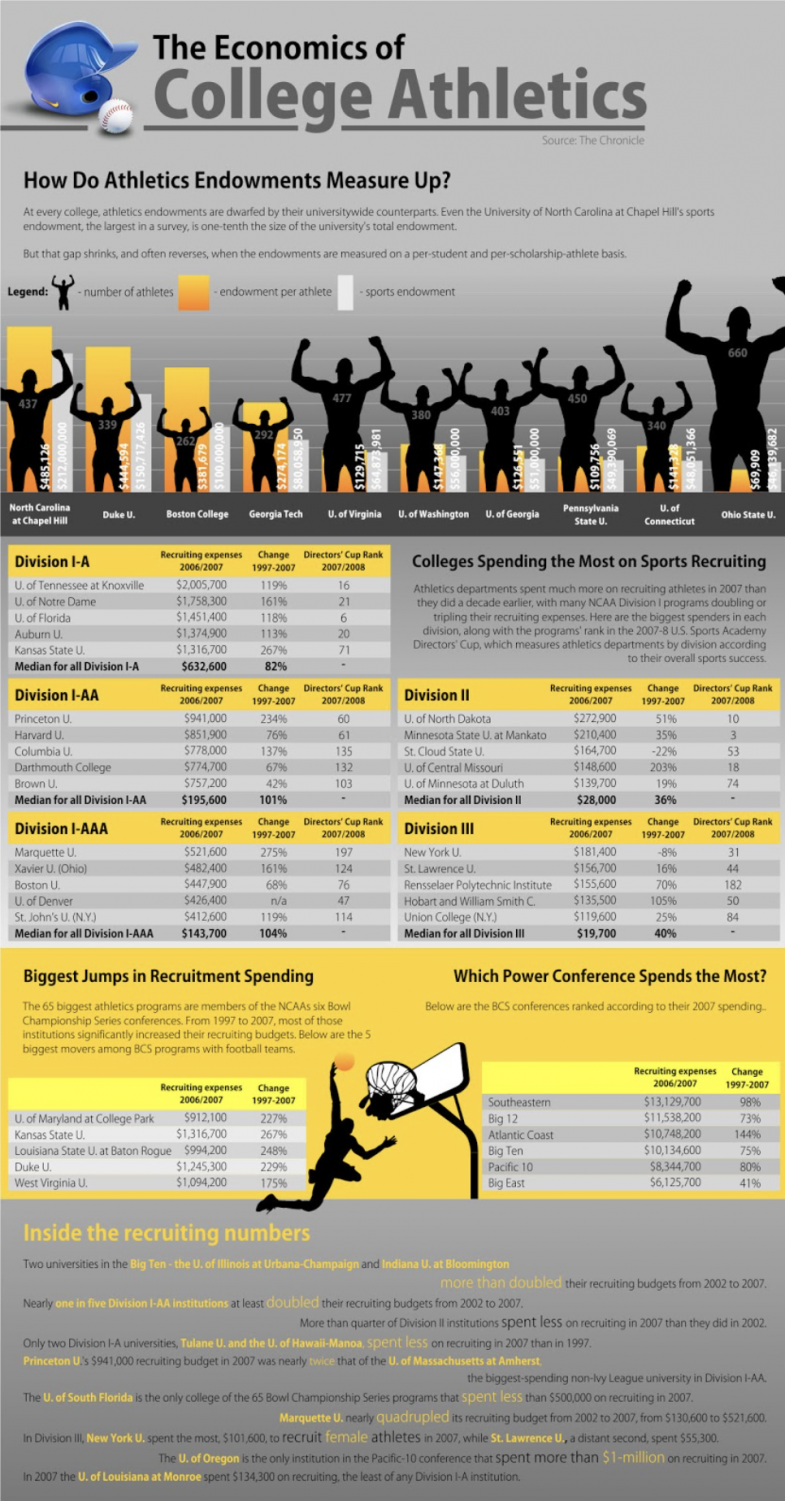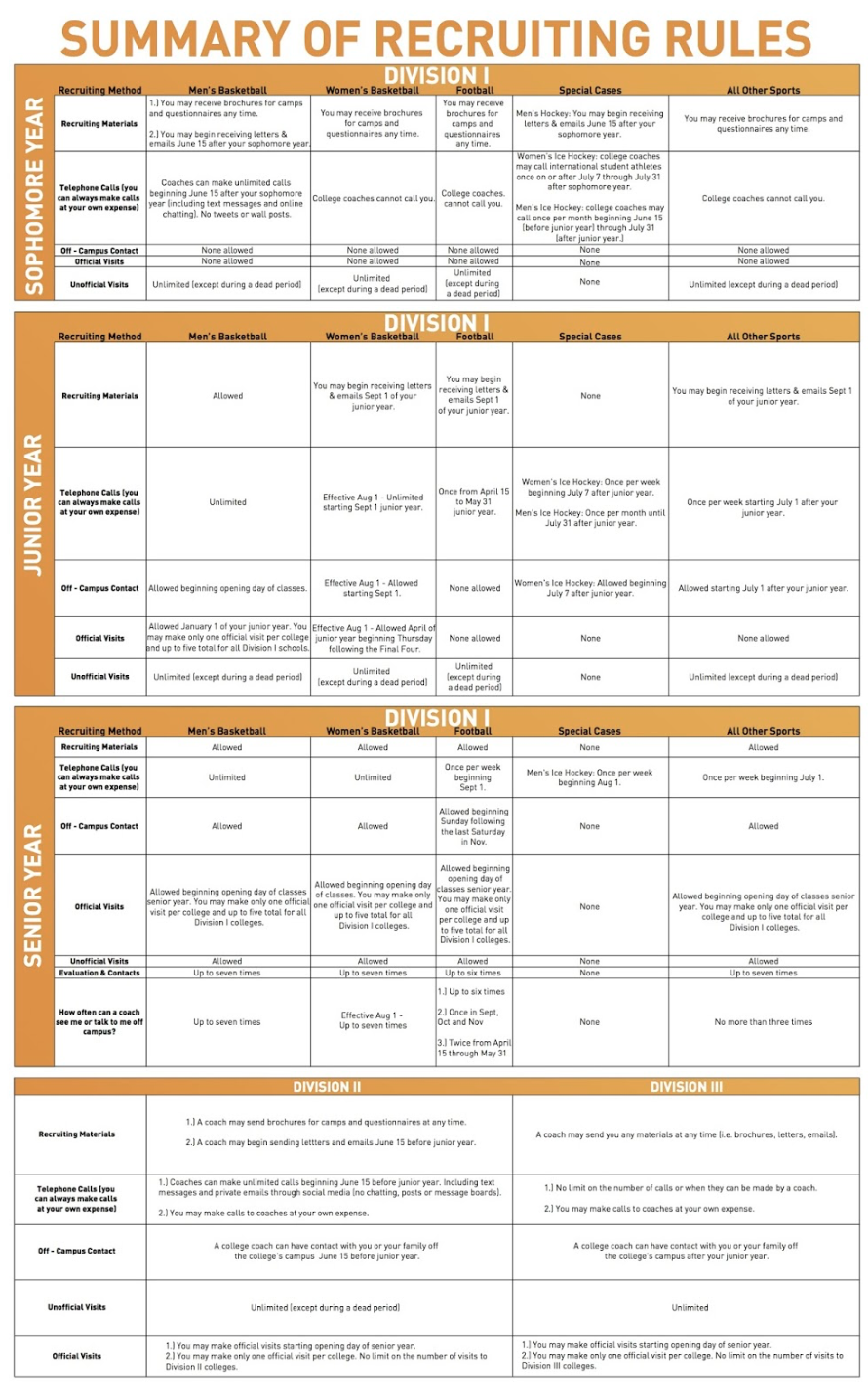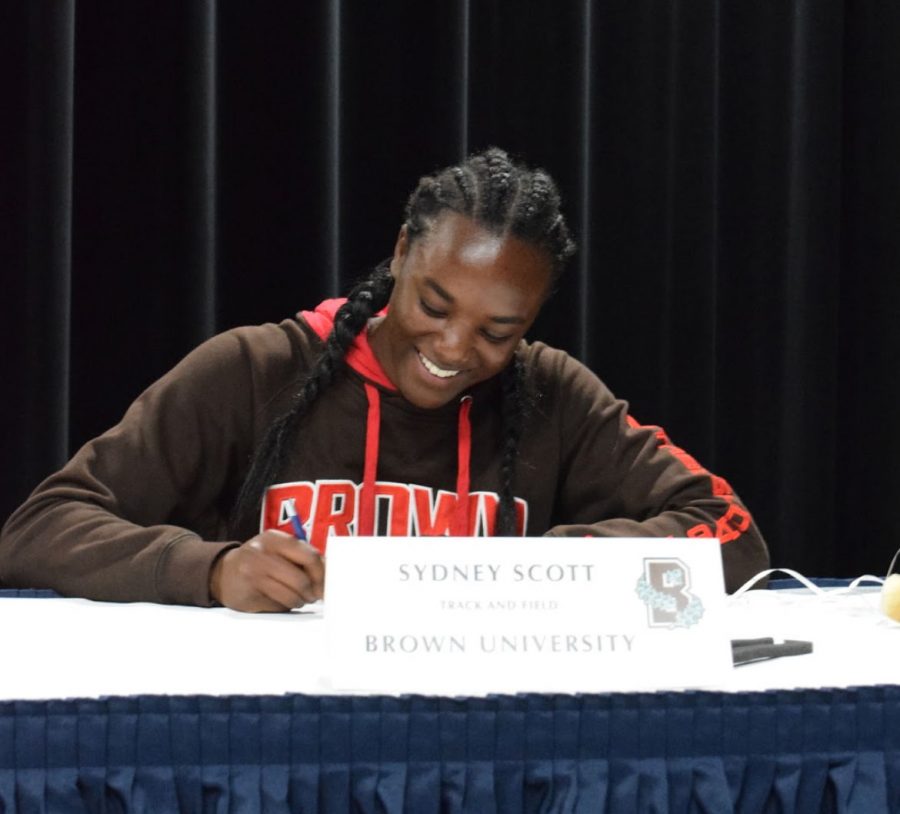The Complicated Process: Recruitment
November 17, 2017
Sitting at table surrounded by friends, family, coaches and teachers, Sydney Scott happily signs her letter of intent to run track and field at Brown University next year. After completing the rigorous recruiting process throughout her high school career, her commitment to Brown is finally official.
For athletes like Scott, the journey begins when coaches initiate conversations with them about the process and then begin matching students with colleges that would suit them well. The National Collegiate Athletic Association (NCAA) regulates athletes of 1,281 institutions, conferences and individuals. The NCAA maintains an eligibility center that monitors recruited students to make sure that they have the appropriate core classes to be eligible for participation in Division I or Division III schools. Fortunately for students at Latin, students are already required to take the proper number of core classes.
“There are 16 core classes, but if you graduate from Latin you’re going to have more than that and in more depth, so initial eligibility is never really a concern for our students as long as they graduate,” director of College Counseling, Jody Jennings said.
To be eligible, students also have to meet the NCAA sliding scale, which has to do with SAT scores. Depending on the school, there is a minimum SAT score requirement.

“It’s usually not an issue for our students. Usually scores and grades are at a pretty good place. So, we’re not worried about initial eligibility; in a lot of places our students are actually being recruited because they can bring up the average for the team. That’s something else that our student athletes bring to the table; they’re really prepared and ready for college and they also happen to be quality student athletes,” Jennings said.
Once the student is eligible to be recruited, schools will start to look at the student athletes more in depth. Not only is the athletic talent piece important but also grades are, as well.
“In a lot of cases in athletic recruiting, grades are as important as athletic talents. The coaches recruiting a student from Charlotte Latin will expect the grades to be good. They definitely want the talent piece, but they also want them to bring the academic side as well,” Jennings said.
As far as when the student gets recruited, it depends on the sport. There are a number of changes being made to the NCAA guidelines for when students should be recruited. Previously, students were being looked at during showcase events as early as freshman year for lacrosse, for example; the students really couldn’t commit that early but knew that they were being reviewed.
“That’s not to say that the scholarship offers are taking place at that time, but it’s an ongoing piece, ongoing changes with the NCAA legislation and also ongoing changes with what coaches are doing with individual schools and individual sports,” Jennings said.
Once the college makes the offer to the student, a verbal agreement can be made. It is a verbal agreement that the student is committed to the school until signing day senior year when the student signs the letter of intent, which is officially committing to the school. If during the time of a verbal agreement the student gets injured or stops playing well for whatever reason, the offer can be taken away.
“That’s something that we remind parents and students of as they go through this process. A number of years ago a young man who was playing football here at Latin blew his knee out at a football game on a Friday night. A few weeks later the school that recruited him and that he had [verbally committed] to pulled back that offer. So then he had zero offers for athletics and relied on his academics to get him into another school. Luckily he was a good student, but football was off the table at that point,” Jennings said.
As far as scholarships go, a school that is a Division I institution has the ability to give money to athletes playing at their school. Division III schools cannot give scholarships to athletes, but they can award grant money. However, not all Division I schools that give scholarships are fully funded. Many Division I football players are fully funded so they will get a full scholarship to play there, but for a sport like baseball they might not get a full scholarship. Instead, the athlete may just get a partial scholarship; there are a number of equivalents.
“They may say, our school has four equivalent scholarships for our team, so that coach can split those scholarships however they see fit, so there may be a really talented baseball player who may get a half scholarship where another player may get a smaller amount of funding,” Jennings said.
One exception to Division 1 schools offering athletic scholarships in order to recruit college athletes is the Ivy League schools. Ivy League schools do not provide scholarship money to recruits unless the student can show financial need and can qualify for a grant or a financial aid package.
Some serious athletes in high school reclassify, which is changing the date that they graduate from high school and/or enter college in order to help your college recruitment prospects. No Latin students have done this in recent years.


“Personally, I like for our students to have the traditional four years of high school and I think they need it for a number of reasons and I think they build a lot of very strong relationships here and have a typical high school experience which allows them to mature at the right levels, and I don’t know that reclassifying allows them to do that as well,” Mr. Jennings said.
As far as how many students per graduating class get recruited for athletics, it’s about 15 students out of 120-125 (about 18% per class).
Latin is fortunate to have many students like Scott signing their letters of intent after four years of the recruitment process. Putting that pen to the paper is a symbolic moment that is worth the countless hours of hard work it took to get them there.
